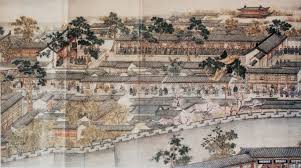For over a thousand years, the Chinese Civil Service Exam has stood as a symbol of merit-based advancement and bureaucratic excellence. From its imperial roots to its modern-day adaptation in China’s government recruitment system, this exam has shaped not just Chinese society but influenced civil service systems around the world.

If you’ve been searching for what the Chinese Civil Service Exam is, how it works, or how it continues to influence global public administration, you’ve come to the right place.
What Is the Chinese Civil Service Exam?
The Chinese Civil Service Exam, originally known as the Imperial Examination System or Keju (科举), was a standardized test used to select candidates for the state bureaucracy in imperial China. Instituted during the Sui Dynasty (581–618 AD) and refined over centuries, it emphasized Confucian philosophy, literature, and moral integrity.
The modern version—used today by the People’s Republic of China—is referred to as the Guojia Gongwuyuan Kaoshi (国家公务员考试), or the National Civil Service Examination. It is administered by the State Administration of Civil Service and is the primary recruitment tool for government positions in ministries, agencies, and departments across China.
READ ALSO: Abraham Adesanya Polytechnic School Fees: 2025 Guide
Historical Overview: Imperial Examination System (Keju)
Origins and Evolution
- Sui Dynasty (581–618 AD): The exam began as a way to reduce nepotism and hereditary power.
- Tang Dynasty (618–907): The system expanded and was institutionalized.
- Song Dynasty (960–1279): Saw the height of meritocracy, with scholars from non-aristocratic backgrounds rising to top positions.
- Qing Dynasty (1644–1911): The system was formalized with three major levels: Local (shengyuan), Provincial (juren), and National (jinshi).
Exam Focus:
- Confucian classics (Analects, Mencius, etc.)
- Poetry composition
- Policy writing
- Calligraphy and moral reasoning
Fun Fact:
- Less than 5% of candidates passed the highest level (jinshi), making it one of the toughest exams in history.
Modern Chinese Civil Service Exam (Guokao)
Today, the Guokao (国考) is the modern civil service examination that over 2 million candidates take each year, competing for roughly 30,000 positions. It is known for its intensity, selectivity, and prestige.
Key Components:
- Administrative Ability Test (公共科目笔试 – 行测)
- Logic and reasoning
- Mathematics
- Data analysis
- Verbal comprehension
- Judgment questions
- Essay Writing (申论)
- Applicants must write a policy proposal, analysis, or report based on a case study.
- Interviews and Professional Assessments
- Successful candidates proceed to interviews, psychological testing, and sometimes field-specific assessments.
The Guokao is typically held once a year, usually in November or December.
Who Can Apply?
To be eligible for the Chinese Civil Service Exam, candidates must:
- Be Chinese citizens
- Be aged 18 to 35 (up to 40 for postgraduates)
- Hold at least a bachelor’s degree
- Have no criminal record
- Possess political reliability and physical fitness
Some posts may require specialized degrees (law, finance, foreign language, IT).
Registration and Application Process
Step-by-Step Guide:
- Visit the official portal http://bm.scs.gov.cn/ (Chinese only)
- Create an account and fill in personal details
- Select preferred job positions from the available catalog
- Submit required documents and academic credentials
- Pay the registration fee and print the confirmation
- Download the exam admission ticket when available
Note: Job postings often include very specific location-based requirements (e.g., Hukou status), so read each job description carefully.
Why Is the Chinese Civil Service Exam So Competitive?
Here’s why the Guokao is considered one of the toughest and most desirable exams in China:
- Prestige: Government jobs offer social status and respect
- Job Security: Civil servants in China enjoy lifetime employment.
- Benefits: Good salary, housing subsidies, healthcare, and retirement plans.
- Work-Life Balance: Government offices typically observe the 9-to-5 model, unlike high-stress private sector jobs.
Global Influence of the Chinese Civil Service Exam
The Chinese system inspired other nations, including:
- Imperial Korea and Vietnam, which adopted Confucian exams
- 19th-century Britain, which modeled part of its civil service reform on the Chinese meritocratic model
- India’s UPSC and many other modern administrative exams, which mirror elements of standardization and essay-based testing
How to Prepare for the Chinese Civil Service Exam
Preparing for the Guokao requires months—if not years—of disciplined study. Here’s how candidates succeed:
Study Materials:
- Past questions and answer guides
- Practice tests from local bookstores and online platforms
- State-issued mock exams
Recommended Websites:
- 📘 China Civil Servant Exam Portal (in Chinese)
- 📘 Offcn Education (prep courses & guides)
- 📘 Huatu Education
Tips:
- Create a study schedule that includes regular mock tests
- Focus heavily on analytical reading and logical reasoning
- Join study groups or coaching centers
- Stay updated with current government policies and Chinese news
READ ALSO: American University of Nigeria School Fees 2025/2026: Full Details
What Happens After Passing?
Candidates who pass the written and interview stages are placed in government roles at various levels:
- Central Ministries (e.g., Finance, Commerce, Foreign Affairs)
- Local or provincial governments
- Special administrative bodies (like the Customs Bureau or State Taxation Office)
They begin as probationary civil servants and may rise through ranks over time based on performance and additional training.
Did You Know?
- Emperor Wu of Han is considered the pioneer of early merit-based appointments.
- The “Eight-Legged Essay” (八股文) was a standard essay format during the Ming and Qing dynasties—and often criticized for stifling creativity.
- In modern times, top Guokao scorers often make national news in China.
Final Thoughts
The Chinese Civil Service Exam is more than just a test—it’s a powerful legacy of meritocracy, academic endurance, and national service. From the ancient Confucian halls of the Song Dynasty to today’s digital testing centers, it remains a cornerstone of governance and excellence in China.
Whether you’re a history enthusiast, policy student, or a job seeker eyeing a career in public service, understanding the roots and structure of this exam offers valuable insight into how nations can build strong bureaucracies based on competence—not connections.






